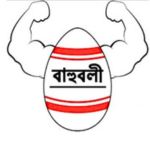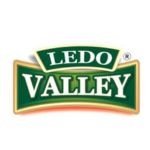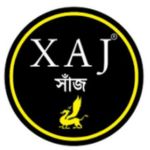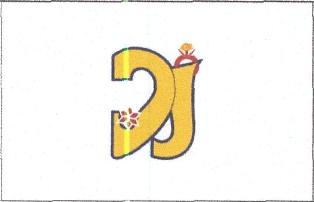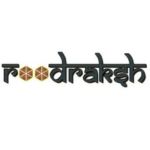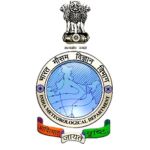DESIGN REGISTRATION
Design registration In India provides legal rights and safeguards against unauthorised copying or imitation of designs, ensuring that the creators receive due recognition and rewards for their innovative work.
Get Started
Among India's Top 100 Consulting Firm
WHAT IS DESIGN REGISTRATION?
Design registration is a significant aspect of intellectual property protection in India.Design registration In India provides legal rights and safeguards against unauthorised copying or imitation of designs, ensuring that the creators receive due recognition and rewards for their innovative work. Design means only the features of shape, configuration, pattern, ornament or composition of lines or colors applied to any article whether in two dimensional or three dimensional or in both forms, by any industrial process or means, whether manual, mechanical or chemical, separate or combined, which in the finished article appeal to and are judged solely by the eye; but does not include any mode or principle of construction or anything which in substance a mere mechanical device, and does not include any trademark as defined in Section 2 of Trade Marks Act, 1999 or property mark as defined in Section 479 of the Indian Penal Code or any artistic work as defined in clause (c) of Section 2 of the Copyright Act, 1957.
WHY DESIGN TO BE REGISTERED?
Design plays a very important role as it attracts and catches the eye of the consumers e.g. some cars have high sale due to its design, though same range cars are available in the market with less attractive design. So now with the quality, manufacturers are also giving importance to design. But the important thing is that design needs protection and for that purpose The Design Act, 2000 (Act) and The Design Rules, 2001 (Rules) was introduced. India’s Design Act, 2000 complies with the articles 25 and 26 of TRIPS agreement which stresses on designs protection.
Object of the Designs Act is to protect new or original designs so created to be applied or applicable to a particular article to be manufactured by the Industrial Process or means. It also ensures that the artisan, creator, originator of a design having aesthetic look is not deprived of his bonafide reward by others applying it to their goods.
DESIGN REGISTRATION REQUIREMENTS
A design is registrable in India only if it is new or original and the said design has not been disclosed to the public anywhere in India or in any country by way of use or by publication or in any other way prior to the date of filing. It should significantly be distinguishable from known designs or combinations thereof. In addition, the design should not contain any scandalous or obscene matter.
Once a design is registered, the applicant shall have the copyright of the design for a duration of ten years from the date of registration. This duration can further be extended for a period of five years, if the applicant desires so, by applying an extension in a desired manner.
Currently, any person, whether a citizen of India or not can file an application for registration of design which he claims to be a proprietor of. Here, person includes both individual and legal entity. There is no categorization of applicant. However, recently the Government of India has notified the Draft Designs Amendment Rules (2013) which proposes categorization of the applicants. As per the draft amended Rules there would be two categories of applicants now – a natural person and other than a natural person. Separate fee structure has been designed for each category.
The person who produces a design is called a designer, which is a term generally used for people who work professionally in one of the various design areas—usually specifying which area is being dealt with (such as a fashion designer, product designer, web designer or interior designer), but also others such as architects and engineers. A designer’s sequence of activities is called a design process, possibly using design methods. The process of creating a design can be brief (a quick sketch) or lengthy and complicated, involving considerable research, negotiation, reflection, modelling, interactive adjustment and re-design.
To register a design under Design Act, 2000, one must ensure following features in your design which are:
- The work must be capable of selling and made separately.
- It must be original and new to the market. The plagiarised design will not be considered under this act.
- It should be purely distinguishable from other designs.
- It must not relate to obscenity or any material which is inappropriate.
As per the provisions of Design Act, 2000 any proprietor who is seeking registration of a design which is original and unpublished previously in any country which does not seems to be contrary to any law and order of that country can file an application for registration. A proprietor as per Section 2(j) includes that person who
- is the author of that design
- acquired design for a valid consideration and
- Any person to whom the design has been devolved from the original proprietor.
In case there is more than one author than the design must be applied by the joint authors only.
Items that cannot be registered as a design under the Act
- Signs, emblems or flags of any country.
- Size of any article, if changed.
- Structures and buildings.
- Integrated circuits’ layout designs.
- Trade variations.
- Any principle or mode of construction of any article such as labels, tokens, cartoons, cards, etc.
- Books, calendars, certificates, jackets, forms-and other documents, greeting cards, maps and plan cards, postcards, leaflets, stamps, medals, dressmaking patterns.
- A mechanical contrivance.
- Workshop alterations of components of an assembly.
Parts of any article which is not manufactured and sold separately.
DESIGNS CLASSIFICATION
Class 1- Foodstuffs
Class 2- articles of clothing and haberdashery
Class 3- travel goods, cases, parasols and personal belongings
Class 4- brushware
Class 5- textile piece goods, artificial and natural sheet material
Class 6- Furnishing
Class 7- household goods, not elsewhere specified
Class 8- tools and hardware
Class 9- packages and containers for the transport or handling of goods.
Class 10- clocks and watches and other measuring instruments, checking and signalling instruments.
Class 11- articles of adornment
Class 12- means of transport and hoisting
Class 13- equipment for production, distribution or transformation of electricity.
Class 14- recording, communication or information retrieval equipment.
Class 15- machines, not elsewhere specified
Class 16- photographic, cinematographic and optical apparatus.
Class 17- musical instruments
Class 18- printing and office machinery
Class 19- stationery and office equipment, artists and teaching materials.
Class 20- sales and advertising equipment, signs
Class 21- games, toys, tents and sport goods
Class 22- arms, pyrotechnic articles, articles for hunting, fishing and pest killing
Class 23- fluid distribution equipment, sanitary, heating, ventilation and air-conditioning equipment, solid
Class 24- medical and laboratory equipment
Class 25- building units and construction elements
Class 26- lighting apparatus
Class 27- tobacco and smoker’s supplies
Class 28- pharmaceutical and cosmetic products, toiler articles and apparatus
Class 29- devices and equipment against fire hazards, for accident prevention and for rescue
Class 30- articles for the cars and handling of animals
Class 31- machines and apparatus for preparing food for drink not elsewhere specified
Class 99- Miscellaneous
DESIGN FILING FEE
The applicable statutory fee for initiating a design filing in India:
Natural person- Rs 1000/-
Small Entity- Rs 2000/-
Other than Natural Person- Rs 4000/-
DESIGN REGISTRATION PROCESS
- Filing
- Examination by the Examiner of the application
- Formality Check to be determined by the Examiner
- Substantive examination to ascertain the nature of the design.
- Consideration of report of Examiner by Controller
- If the design applied is eligible for registration the same shall be registered forthwith.
- If there are objections, a statement of objections shall be communicated to the applicant.
- If the applicant fails to comply with the objection or fails to apply for hearing within 3 months from the date of communication, the application shall be deemed to be withdrawn.
- Period of removal of objections shall not exceed 6 months from the date of filing of the application. However this period can be extended by further 3 months by filing a request in Form-18 within 6 months.
6.Design Registration & Publication- once an application is registered it is published in the Patent Office Journal within 1 month.All the registered designs are entered in the Register of Designs which is accessible to public on IPI official portal.
DOCUMENTS REQUIREMENT
- Application (Form 1)
- Representation should be prepared as prescribed under Rule 12, 13 and 14 of the Design Rules and should be submitted in duplicate.
- Power of Authority (Form-21) in original if filed through agent/advocates.
- Priority document if required.
FAQs
Design registration granted for 10 years, after that it can be renewed for 5 years.
yes, on any one of the grounds as stated in Section 19 of The Designs Act, 2000.
the fees to be paid in respect of the design is specified in the First Schedule of the rules.
by cash/cheque/bank draft.
when design is not new or original, not distinguishable from known design, comprises or contains scandalous or obscene matter etc.
design once accepted is published in Journal on the website www.ipindia.gov.in for public inspection.
the application, drawings, photographs, tracings, representations or specimens left shall not at any time be open to public inspection or be published.
An appeal to the High Court is to be made within 3 months of the date of order passed by the Controller.
one can appoint a legal practitioner or an agent whose name and address had been entered in the register of patent agents.
Contact Us For Free Quote


